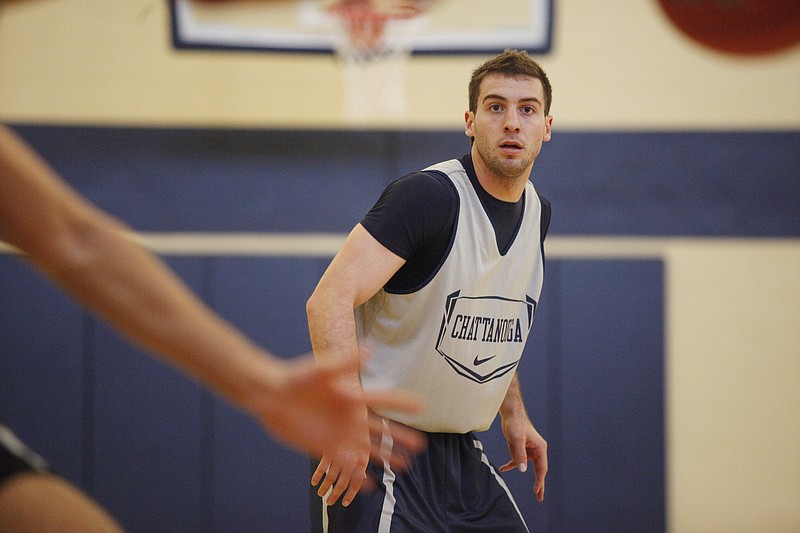Keegan Bell remembers the charge he took as the final buzzer sounded Marshall last year as if it happened last night.
He helped off his defender, had both feet outside of the lane, and held his ground in a legal guarding position as DeAndre Kane crashed into him and swished his shot.
Referee Tom Eades waved off the bucket to give the University of Tennessee at Chattanooga a 69-68 win over its former Southern Conference rival.
"Oh, it was a charge," Bell said. "No doubt."
The trio of officials huddled after the play to assure they all agreed with the call by a Eades who called the 2010 national championship game.
The block-or-charge call in college basketball will be a little easier for officials to make during the 2011-12 season.
The NCAA instituted a semi-circle line which is 36 inches away from the center of the basket, much like the line on NBA courts.
The short version of the rule is that if a help defender has his feet on or inside the arc when contact is made, the call is a block. If the secondary defender is outside the line, it's a charge.
Yet it's still a subjective call because the offensive player cannot be out of control and the defensive player has to be in legal guarding position.
"I think as we go on, it will get easier for us," 10-time Final Four official John Cahill recently said on an ESPNU roundtable show with four other Final Four referees.
"We've always refereed the torso of the defender," Cahill said. "We're going to have to referee the feet as well."
But that doesn't mean that if a secondary defender's feet are outside the circle that it's automatically a charge. Or if that defender is inside the circle that the call is a block.
An offensive player heading to the goal and leading with a shoulder, a knee or an elbow will likely be called for a charge no matter where the defender's feet are on the floor.
"All three officials are really going to have to focus on whether the defender's feet are and let the lead official make the call," Cahill said. "And if they have to adjust it, they'll go in and share that information."
The line seems to make little difference to SoCon coaches in terms of how they teach defensive principles. But they are interested to see how officials adjust to the new rule.
Mocs coach John Shulman tries to have weak-side defenders straddle an imaginary line down the middle of court and then scoot over to take a charge. Bell followed that rule while enraging Marshall fans at the end of a tight game.
"If you're a good defensive team and you care about 'D,' that doesn't do anything for you," Shulman said. "You'd better be outside the paint taking charges.
"That circle is for the officials. But all the officials are so good they don't need any help."
Furman coach Jeff Jackson sees the new arc as an advantage of teams on the offensive, and he's simply looking for consistency from game to game.
"The challenge for the officials is that just because the athlete is outside the arc, that doesn't automatically make it a charge," he said. "It's not just being outside the arc, it's also having good established legal position. I'm concerned that the understanding of legal position begins to wane."
College of Charleston coach Bobby Cremins keeps his defensive lessons on the line very simple. He tells his players to get outside of the circle. Yet he's interested to see how the new rule will impact games.
"I'm going to keep an eye on it," Cremins said. "It's been successful in the NBA and that's where we adopted it from. If they think it can prevent injuries, I'm all for that.
"So far, it's not been the major impact I thought it would be."
But he also hasn't watched a player take a last-second charge at the arc.
